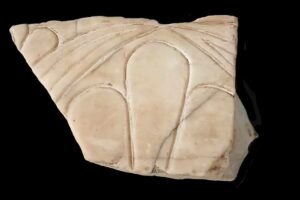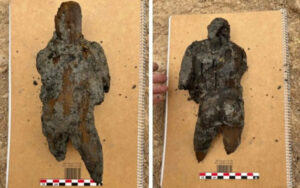“Unbelievable Experiment: Family’s Disturbing Decision to Raise Infant Son Alongside a Chimpanzee Revealed in Shocking Footage”
What happens when you blend a nine-month-old baby and a baby chimpanzee into one quirky experiment? Well, trust me, it’s not your typical playdate! Almost a century ago, in a rather peculiar twist of psycho-babble, comparative psychologist Winthrop Niles Kellogg and his wife decided to raise their infant son, Donald, alongside a little chimp named Gua. The idea was to see how these two bundles of joy would navigate early life together—spoiler alert: it’s fascinating! Captured on film, their shared adventures reveal compelling differences in their behaviors and reactions, all while raising eyebrows and ethical questions even back then. Was it nature or nurture at play? And did Gua leave with slight ideas of human logic or just a larger appetite for bananas? Join me as we dig into this bizarre slice of history that tested boundaries in more ways than one! LEARN MORE
Footage of a controversial 1930s experiment revealed the differences between a nine-month-old baby and a chimpanzee in different situations after being raised together.
It’s a peculiar experiment indeed, but it’ll come as no surprise that the idea came about almost 100 years ago.
Comparative psychologist Winthrop Niles Kellogg and his wife brought home a baby chimpanzee named Gua on 26 June 1931, and had decided to bring her up along with their own baby, Donald.
The idea was later outlined in the Psychological Record as an experiment that would show how environment could influence development, and if a chimp could really think like a human.

The psychologist carried out a comparative study of the two (YouTube/A/V Geeks 16mm Films)
Origins of the experiment
In his early days as a psychologist, Kellogg had always wanted to conduct this type of experiment, having an interest in wild children who were raised with little to no human contact.
Dismissing the idea of leaving a human child in the wilderness for obvious reasons, the American decided to do the opposite, and bring an infant animal into human life.
So, how did the experiment work?
As soon as Gua entered his life, Kellogg would go on a tireless run with his wife, where they would conduct a number of tests on their son and the chimp for the next nine months.
It was said that they would spend 12 hours every day carrying these out and recording results.
They would raise both in the same way, and would then carry out experiments on the two such as problem solving, ticking, strength, death perception and obedience, among many others.
Some of these were captured on video, with the archive footage being uploaded to YouTube – though one test caught the eye more than others. Take a look:
A harrowing detail
Testing their ‘responses to a loud sound’, the psychologise decided to line the chimp and baby up next to each other, facing the camera, while a man fired a gun behind them.
It only looked to be a blank but you could probably guess that health and safety guidelines and animal laws nowadays would prevent this from happening now.
Gua looked to react straight away to the noise, finding comfort from her dad Kellogg by climbing straight onto him and seeming distressed, while Donald seemed slightly startled, but mostly unbothered.
Despite the chimpanzee performing favourably in early tests, it was said that she hit a ‘cognitive wall’, as the Psychological Record authors detailed: “(The experiment) probably succeeded better than any study before its time in demonstrating the limitations heredity placed on an organism regardless of environmental opportunities as well as the developmental gains that could be made in enriched environments.”

While Donald was startled, he was more curious than his chimp sister (YouTube/A/V Geeks 16mm Films)
An unexpected ending
But the experiment would end very suddenly, whether it be due to the strenuous parenting and scientific work, or that Gua was growing quickly and becoming a threat to Donald’s wellbeing.
The Psychological Record authors wrote: “Our final concern is why the project ended when it did.
“We are told only that the study was terminated on March 28, 1932, when Gua was returned to the Orange Park primate colony through a gradual rehabilitating process.
“But as for why, the Kelloggs, who are so specific on so many other points, leave the reader wondering,” they admitted.
However, one finding was that Donald had began imitating Gua’s chimp noises, while she showed no real signs of picking up human communication.
“In short, the language retardation in Donald may have brought an end to the study,” they concluded.




















